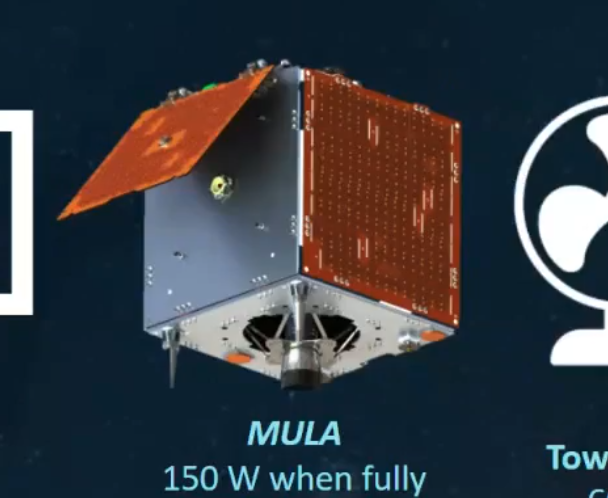
A group of UP Diliman scholars under the Space Technology Applications, Mastery, Innovation, and Advancement (STAMINA4Space) Program is set to build the largest earth observation satellite the Philippines has ever deployed.
The 16-strong team who will build the satellite, named Multispectral Unit for Land Assessment (MULA), is composed of project manager John Leur Labrador, Julie Ann Banatao (systems engineer and technical lead), Edgar Paolo Violan (mechanical analysis engineer), Manuel Del Rosario Jr. (attitude and orbit control system hardware and global positioning system engineer), Daniel Fadi Rahayel (power systems engineer), Shielo Namuco-Muta (spacecraft operations engineer), Adrian Sales (RF S/X-Band engineer), Floyd Ferrant Fortes (on-board data handling engineer), Paul Leonard Atchong Hilario and Noniel Paul Novabos (payload engineers), Keziah Bartilad (ground segment engineer), Nathan Rosimo (thermal, radiation, and propulsion engineer), Joash Rodriguez (flight software engineer), Kenneth John Ibarra (attitude and orbit control systems engineer), Gabriel Kevin Mabini (mechanical design engineer), and Romer Kristi Aranas (downstream services engineer).
The team was introduced to the press on Sept. 16 during a virtual conference via Zoom and livestreamed on Facebook.
Their specializations range from aerospace engineering, applied physics, geomatics engineering to materials engineering.
Some of their tasks are mission analysis, designing how MULA will function once in orbit, ensuring the satellite can withstand the temperatures and radiation of space, ensuring that the data the satellite collects will be safely, seamlessly, and accurately transmitted to the ground receiving station, and developing policies so that end-users such as local government units can make use of the data and images collected.
From April to August 2021, some members of the team were sent to the United Kingdom for hands-on training, where they completed a detailed design of each part of the satellite before returning to the Philippines.
MULA. Measuring .76 x .84 x 1.03 meters and weighing 130 kilograms, MULA will be nearly twice the size of Diwata-2, and is expected to fly at a relatively low orbit (around 2,000 kilometers above the earth).
MULA will follow a sun-synchronous orbit, which will increase the accuracy and consistency of the images and data it collects.
Labrador said MULA’s TrueColor camera can capture images for things like agricultural applications and monitoring the progress of infrastructure projects in remote locations. The satellite will also be capable of tracking aircraft and ships, as well as simultaneous capturing and downloading data.
Labrador added that aside from advancing Filipino space expertise by training more scientists, MULA’s data is highly valuable, and that the gains from the Philippines’ initial P1.7 billion investment into the project will be worth the effort.
“Over five years, that sums up to P8.6 billion of total investment gains. This is just the [satellite] image alone, and we’re not yet counting the indirect benefits that will be realized when we help with the decision-making process of the different national agencies using satellite imagery,” he said.
MULA is currently in the second phase of implementation — now under the Philippine Space Agency (PhilSA) — where the designs and plans that the team created will be refined until they feel confident enough to build the actual satellite. MULA is expected to launch in the latter half of 2023.
STAMINA4Space program leader, Maricor Soriano, said developing MULA is “a fitting finale that allows the transition of satellite development from an academic, research setting to an operational, PhilSA-led endeavor.”
For her part, vice chancellor for academic affairs, Ma. Theresa T. Payongayong, commended the team, saying that this important technological innovation “further strengthens the country’s capabilities to transform and improve the Filipinos’ well-being and the way they live.” She added that this is “consistent with the vision of the University of the Philippines Diliman to serve as a modern research university with a public mission.”
[huge_it_gallery id=”55″]
Images from the STAMINA4SPACE Facebook page
